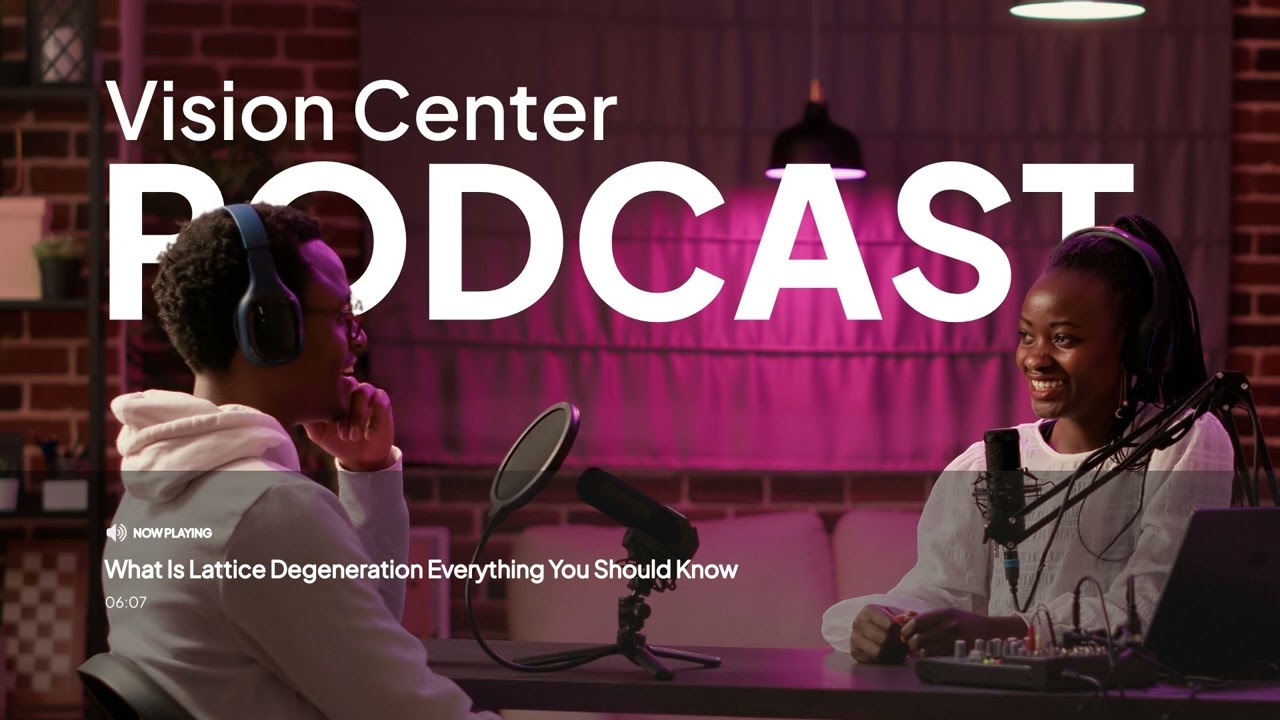If you or someone you love has lattice degeneration, it's natural to wonder if this eventually leads to vision loss. But there's good news: lattice degeneration is common, usually harmless, and manageable.
With regular eye exams and understanding key symptoms, you can significantly reduce your risk of vision loss. Here's everything you need to know.
What is Lattice Degeneration?
Lattice degeneration describes thinning in the peripheral retina, the part of your eye responsible for side vision. It’s often visible as crisscrossing lines.
The condition is surprisingly common, affecting around 6 to 10% of the general population. It usually appears in both eyes for roughly half of the affected people.
The vast majority of people with lattice degeneration will never experience serious vision problems.
What Happens Inside the Retina?
Lattice degeneration occurs when your retina, the delicate tissue lining the inside of your eye, becomes thinner in specific areas.
Under a microscope, these patches look like latticework, hence the name. This thinning is frequently linked to aging and nearsightedness (myopia).
As the vitreous gel inside the eye shrinks with age, it can tug at these thin patches, occasionally causing small retinal holes or tears. While this can sound alarming, it's crucial to put the condition into perspective.
Here are the truths behind some common misconceptions:
- Not macular degeneration. Lattice is different and far less severe than age-related macular degeneration.
- Not inevitably progressive. Most lattice patches remain stable for years without changing.
- Rarely central. Almost always located away from your central vision.
- Common with myopia. Often found in moderately to highly nearsighted individuals.
What are the Risks of Retinal Tear and Detachment?
While lattice degeneration itself doesn't usually threaten your sight, it slightly raises your risk of experiencing a retinal tear or detachment.
In people without other risk factors, the lifetime chance of detachment is only about 0.5%. However, this risk increases (up to about 2%) if you have high-risk features, such as very high myopia (worse than -6 diopters) or a history of retinal detachment in your other eye.
Red Flags for Retinal Tear or Detachment
It's crucial to recognize symptoms that indicate potential trouble. These red-flag signs signal a possible retinal tear or early detachment and warrant immediate evaluation:
- Flashes of light. Sudden streaks or sparks appearing in your peripheral vision.
- Floaters. A sudden shower of dots or cobwebs drifting across your vision.
- Blurred vision. An abrupt, unexplained blurring or loss of clarity in one eye.
- Curtain-like shadow. A dark or gray shadow moving into your field of vision.
Early detection and prompt treatment of a retinal tear can prevent the progression to a more serious retinal detachment, protecting your long-term vision.
When Should You Seek Treatment for Lattice Degeneration?
Regular monitoring through dilated eye exams is essential if you've been diagnosed with lattice degeneration. Typically, your eye doctor will recommend an examination every one to two years, unless symptoms appear sooner.
Not every lattice patch requires treatment. Most are simply observed over time.
When your eye doctor recommends treatment, it usually involves laser photocoagulation, a brief in-office procedure that creates tiny scars around retinal tears or weak areas, effectively preventing retinal detachment.
Treatment isn't routinely performed for every lattice lesion because clinical evidence shows little benefit in asymptomatic, low-risk cases.
You should consider prophylactic treatment if:
- You experience new symptoms. Sudden flashes or floaters indicate a possible retinal tear.
- There’s an active retinal tear. Immediate laser therapy is essential to prevent retinal detachment.
- Early signs of detachment. Your doctor identifies subretinal fluid around lattice lesions.
- You had a previous retinal detachment. Treatment may help protect the other eye if lattice is present.
- You're undergoing cataract surgery soon. Preemptive laser treatment might reduce postoperative detachment risks in highly myopic patients.
How to Live Safely With Lattice Degeneration
Having lattice degeneration doesn't mean drastically altering your lifestyle. Most everyday activities remain perfectly safe, though some high-risk scenarios should be approached with caution.
Here’s what we suggest:
- Safe activities. Aerobic exercise, running, cycling, and yoga are generally fine.
- Use caution. Activities with significant head trauma risk (like boxing or contact martial arts), extreme weightlifting, or intense straining exercises.
- Travel and altitude. Flying in airplanes or visiting higher altitudes poses no increased risk to your retina.
- Protective habits. Always use protective eyewear for sports, promptly address any eye injuries, and keep up with your regular eye appointments.
Listen In Q&A Format
What Is Lattice Degeneration Everything You Should Know
Vision Center Podcast
Managing anxiety around lattice degeneration involves being informed without becoming overly cautious.
Remember, severe complications are rare, and understanding your condition is empowering, helping you maintain both eye health and peace of mind.
To stay proactive, make sure you:
- Schedule regular eye exams to monitor your condition closely.
- Learn and remember the warning signs of retinal tears or detachment.
- Discuss your personal risks with your eye care provider.
In this article







